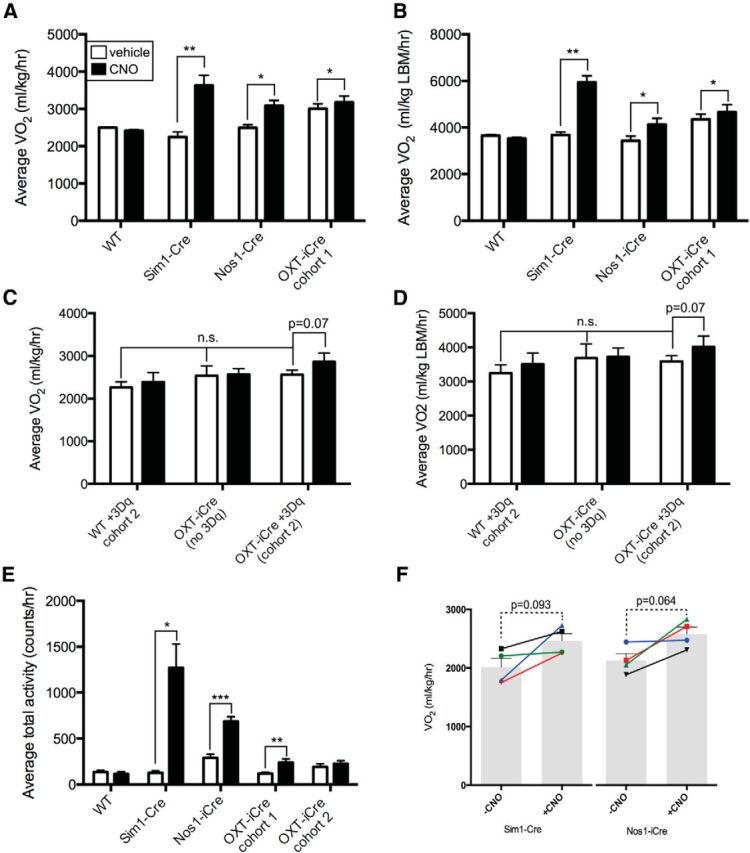Figure 8.

Acute activation of Nos1PVH neurons increases energy expenditure. WT+AAV-hM3Dq, Sim1-Cre+AAV-hM3Dq, and Nos1-iCre or OXT-iCre+AAV-hM3Dq mice were injected with vehicle (white bars) or CNO (black bars). A, B, E, Activation of Sim1PVH, Nos1PVH or OXTPVH neurons increases average oxygen consumption (A, B) and total activity (E) over 4 h following injection. C, D, A second cohort of CNO-naive mice also shows a trend toward increased 4 h average VO2 in response to activation of OXTPVH neurons, while baseline VO2 is unchanged compared with WT+3Dq or OXT-iCre mice without 3Dq injections (WT, n = 5; Sim1-Cre, n = 4; Nos1-iCre, n = 4; OXT-iCre cohort 1, n = 10; WT cohort 2, n = 4; OXT-iCre+3Dq cohort 2, n = 4; OXT-iCre, n = 4). F, To determine potential activity-independent changes in VO2, VO2 was determined in Sim1-Cre+3Dq and Nos1-iCre+3Dq mice before and after CNO treatment, at time points when locomotor activity was approximately matched at activity levels below a threshold value of 300 counts/h (bars indicate average values ± SEM, line segments indicate individual mice; Sim1, n = 4; Nos1, n = 4). Average values ± SEM are shown. *p < 0.05, **p < 0.01, ***p < 0.001 compared with vehicle values. Significance was determined using two-tailed paired t test within groups or unpaired t test between groups.
